Move Better, Not Harder: Low-Impact Workouts That Build Real Strength Indoors
Moving your body with care doesn’t mean sacrificing your strength—or your confidence. For so many of us, harsh floor jumps and relentless burpees can feel intimidating, especially if you’re nursing tender knees, rehabbing an old sprain, or simply prefer a joint-friendly approach. The truth? You can build real, lasting strength indoors through smart, low-impact routines designed for every fitness level and any living room. Imagine stepping into a space where progress isn’t about punishing effort, but about gentle, consistent growth you’ll actually look forward to. Science-backed low-impact workouts aren’t just for beginners; even experienced athletes and those managing health changes find them powerful for sustainable strength. Think: exercises that build muscle, boost confidence, and protect the wisdom of your body—without risk of sidelining you with injury. If you’ve felt lost navigating endless lists of “easy” moves that don’t deliver, this is for you. From creative bodyweight sessions and clever uses of household items to resistance bands and chair-based intervals, there’s something here for every age, ability, and motivation level. Ready to change the way you move—and how you feel in your own skin? This expanded list of low-impact indoor workouts blends gentle guidance with proven strength benefits, all wrapped in the welcoming spirit of possibility. Let’s begin, one mindful move at a time.
1. Indoor Walking Strength Routines
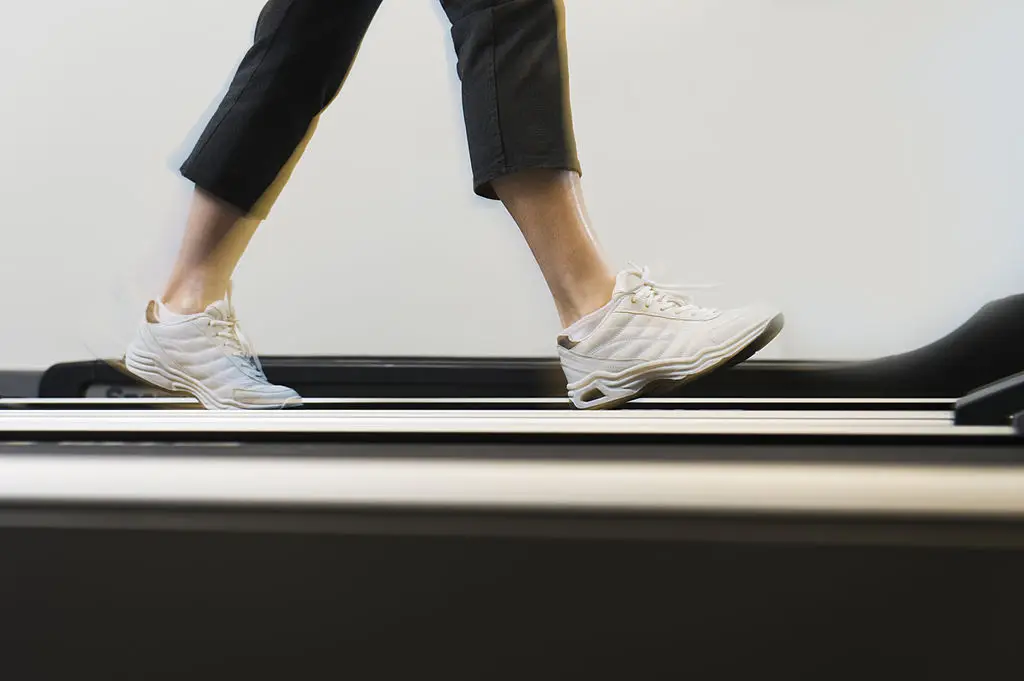
Walking indoors doesn’t have to be a quiet stroll around your living room. By weaving in strength-based moves—like punches, squats, or standing crunches—you can turn every lap into a comprehensive, full-body session. Expert trainers rave about their accessibility and adaptability, making these routines perfect for all experience levels. Simply walk briskly for a minute, pause to perform a set of bodyweight exercises for your arms or core, then continue. You can increase intensity by adding wrist or ankle weights, or by holding light dumbbells during your circuits. These routines have become wildly popular on YouTube, with hundreds of thousands of people joining in daily for joint-friendly, music-driven workouts in their own homes. Data from fitness experts show that a 20-minute session can burn nearly as many calories and sustain heart rates similar to some tougher outdoor workouts, all without pounding the pavement. Modifications are endless: use the back of a chair for added support, slow your walk to match your comfort, or create your own interval mixes that keep things fresh. Indoor walking strength routines prove that you don’t have to choose between muscle and mobility—just put one foot (and a few squats) in front of the other.
2. Circuit-Based Resistance Training

If you’re pressed for time but crave total-body strength, circuit-based resistance training is your go-to. These workouts group together multiple compound moves—think squats to shoulder presses or lunges to rows—and move between them with minimal rest. This approach not only builds muscle, but keeps your heart rate up for added cardiovascular gain. For example, try rotating through squats, push-ups, bent-over rows, and glute bridges; perform each for 45 seconds, resting for 15 seconds before starting the next. Science supports this blend of muscle and heart training, showing that well-designed circuits can optimize both strength gains and endurance. Trainers encourage using resistance bands, dumbbells, or even just your own body weight, and offer plenty of modifications. Beginners might swap jumps for step-backs or lighten resistance, while more advanced users can increase intensity by shortening rest intervals or adding weight. Don’t let the structure intimidate you—these circuits are about progress, not perfection.
3. Rowing for Total-Body Strength
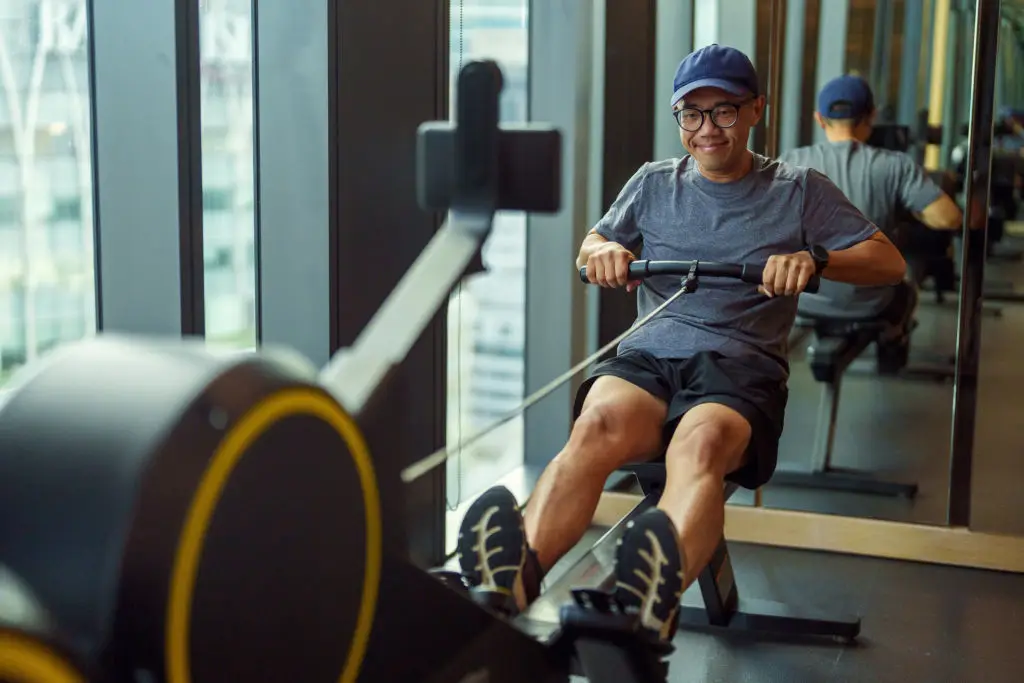
Rowing isn’t just for Olympic athletes—this full-body, low-impact powerhouse is gaining ground as a home gym staple. Each stroke works your legs, back, core, and arms all at once, demanding coordination and strength without impact on sensitive joints. Trainers frequently recommend interval approaches: alternate 30 seconds of vigorous rowing with 30 seconds of gentle movement or rest, repeating for several rounds. What’s especially appealing? Rowing’s adaptability. If you’re easing back into fitness, start with fewer intervals and maintain moderate pace. Need more intensity? Bump up your speed or add extra sets. Experts note that rowing delivers impressive aerobic and muscular benefits, especially for hips, knees, and backs that need a gentle touch. Support your low back with proper seat adjustments, and allow your breath to set the rhythm. Whether you row for five or fifty minutes, you’ll find your entire body getting stronger, one pull at a time.
4. Indoor Cycling Strength Progressions
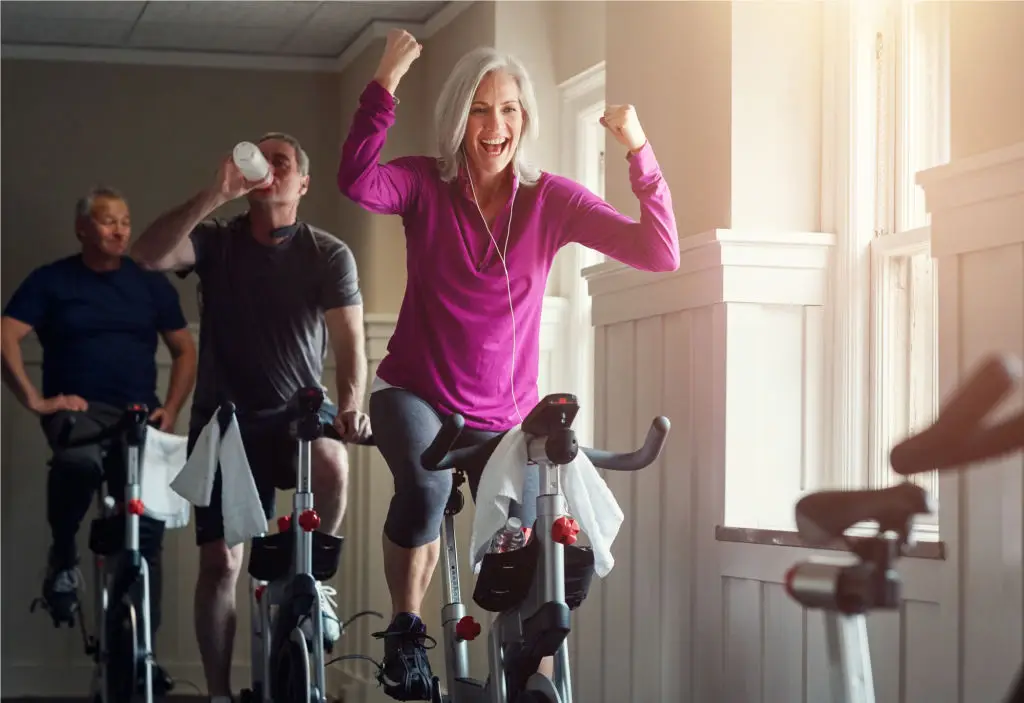
Indoor cycling isn’t all about racing or chasing calories. With resistance adjustments and thoughtful programming, your stationary bike becomes an incredible tool for developing power in your legs and glutes—without harsh stress on the knees or hips. Experts advise building progressions, such as “ladder” workouts: begin with easy, fast spins, then incrementally increase resistance while reducing speed until you’re pedaling at a challenging but joint-safe intensity. Modern bikes offer customizable settings, so you can truly measure your strength as it improves. For those with back or hip discomfort, recumbent bikes or lower-resistance sessions provide welcome alternatives. Remember, good posture and a strong core make every pedal stroke more meaningful. As your muscles adapt, celebrate small wins like climbing to a higher resistance or sustaining solid pace for longer intervals—you’re building strength by listening to your body’s cues, not by powering through pain.
5. Isometric Holds and Supersets

Static holds may look simple, but they pack a significant punch for low-impact strength development. Moves like planks, wall sits, or glute bridges demand that your muscles work hard to stay engaged, rather than relying on momentum or explosive impact. Isometric training is especially lauded in physical therapy and rehabilitation circles for its joint-protective properties—anyone, at any age, can tailor the duration and intensity to fit current abilities. To boost results, you might pair these holds with gentle movement supersets. For example, perform a wall sit, then follow it with slow-standing calf raises or chair-supported squats. Not only does this structure build muscular endurance and stability, but it also encourages patience and body awareness. If floor work is difficult, try elevated surfaces or reduce hold times. Every second you commit is another brick in the strong foundation you’re building—no impact required.
6. LISS with Strength Movement Add-ons
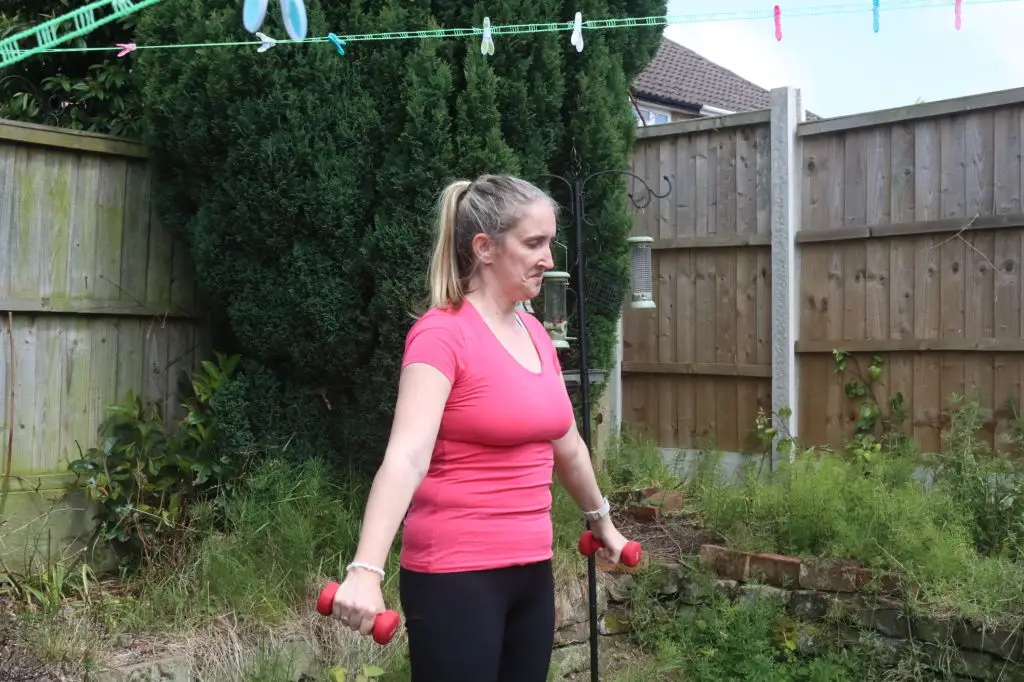
LISS—short for Low Intensity Steady State—may sound technical, but it’s essentially what past generations did: steady, moderate activity with moments of strength. Blend a comfortable, indoor walk or gentle cycling session with periodic sets of squats, overhead presses, or standing ab work. This dual approach is supported by studies showing measurable reductions in blood pressure and improvements in both cardiovascular health and muscle tone, all at about 50% max effort. What makes this method so approachable is its flexibility. If you tire easily, increase rest intervals. Prefer a challenge? Drop into deeper squats or crank up resistance a notch. You might also swap in your favorite strength moves, creating an experience that matches your needs right now. The true win comes not from pushing harder, but from the positive momentum you’ll gather with every consistent session.
7. Bodyweight Compound Movements

No equipment? No problem. Slow, deliberate bodyweight exercises—like squats, lunges, push-ups, or step-ups—deliver lasting strength gains, especially when you zero in on controlling the movement from start to finish. Trainers recommend focusing on proper alignment and “time under tension” rather than chasing speed or high repetitions. As you move carefully, you’ll recruit stabilizing muscles that protect joints and fortify your body’s natural structure. For those new to strength training, using supports like a bench or wall can make moves safer and more accessible. You can always adjust the depth of your squat, or do push-ups at an incline, until your confidence grows. What matters most is consistency—every controlled rep strengthens not only your body, but also your trust in your ability to keep progressing.
8. Elliptical-Based Strength Intervals

The humble elliptical is more than just a cardio staple—it’s a powerful ally for full-body strength building, too. By alternating between higher-resistance intervals and active recovery, you challenge both upper and lower body muscles without ever pounding your joints. Many machines even have moveable handles, getting your arms, shoulders, and chest involved for comprehensive muscle activation. Start with short, manageable intervals—perhaps 1 minute of higher-resistance work, then 2-3 minutes easy, repeating for as long as feels comfortable. If you’re easing into fitness or working with limitations, simply dial back the resistance or focus on maintaining good posture. You’ll notice greater stamina, improved muscle tone, and a steady confidence that comes from a workout tailored to honor your body.
9. Chair-Assisted Strength Training
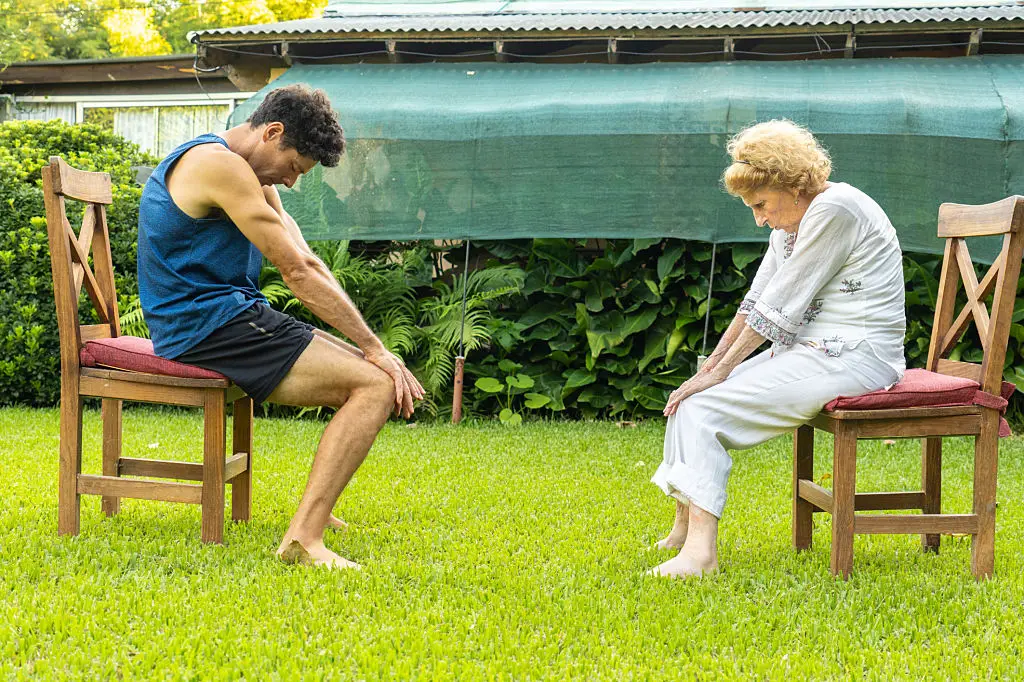
For those who crave security or need to build strength while seated or supported, chair-assisted workouts are a revelation. Use a sturdy chair to support you through sit-to-stand squats, gentle step-ups, or chair triceps dips—moves that blend accessibility with results. These routines offer a safe option for those easing back into activity, managing lower-body injuries, or seeking to improve balance. Modifications abound: adjust the chair’s height, use armrests for additional support, or position the chair near a wall for extra stability. This gentle format also encourages better body awareness, making it ideal for active aging or moments of transition. Rest assured: working out with a chair isn’t a step back—it’s a smart, flexible step forward.
10. Resistance Band Routines

Lightweight and endlessly adaptable, resistance bands bring a fresh dimension to indoor strength training. You can use them for a variety of moves—banded rows, biceps curls, glute bridges, overhead presses—no need for bulky equipment or a big budget. Bands provide gradual, joint-protective resistance, and their versatility makes them ideal for all ages and experience levels. Try looping a band under your feet for standing rows or wrapping it around a doorknob for chest presses. If you need less resistance, choose a lighter band or shorten your range of motion. For those wanting more challenge, double up bands or slow down the eccentric (releasing) phase of each move. Every pull and press is another mark of progress—and every session leaves you stronger, no matter where you start.
11. Pilates-Inspired Strength Matwork
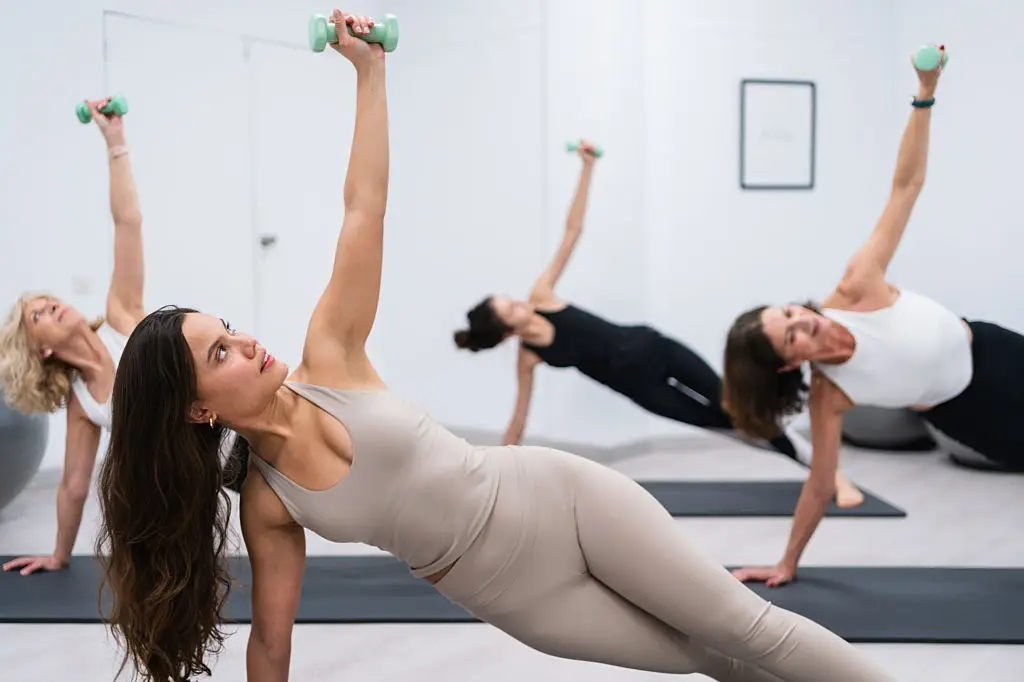
Pilates has stood the test of time for good reason: its core, glute, and postural strength benefits are profound and accessible. Indoors, you can build a mat-based routine of bridges, side-lying leg lifts, and modified planks. Each movement focuses on activating deep muscles, so even simple-looking holds can bring real results. Support your body with props like pillows or towels for extra comfort, minimize range of motion if needed, and pause for breath whenever you wish—Pilates is all about working with your body, not against it. Over time, you’ll notice changes not only in your strength, but also in your posture, stability, and overall confidence. Kind, consistent attention to those “hidden” muscles translates to more ease in every movement you make.
12. Functional Strength with Household Items
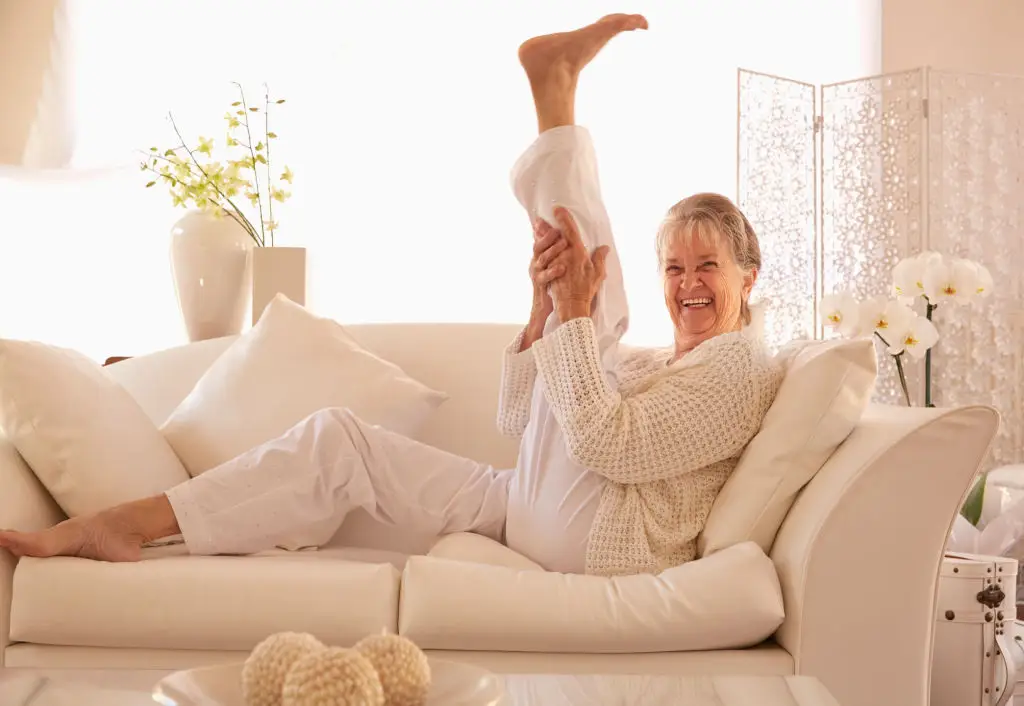
You don’t need a home gym to get creative and strong. Everyday items—such as water bottles, canned foods, or even laundry detergent—can double as makeshift weights for curls, presses, loaded carries, or “farmer walks.” This approach adds fun and practicality to your routine, teaching your body to lift and move in ways that mirror real life. Adjust the weight or swap in softer items for gentler sessions. If grip strength is an issue, use lighter objects or focus on shoulder-level holds. The real benefit? Building practical, functional muscle while developing an inventive spirit—reminding yourself that opportunity for growth exists in every corner of your home.
13. Gentle Yoga Strength Flows
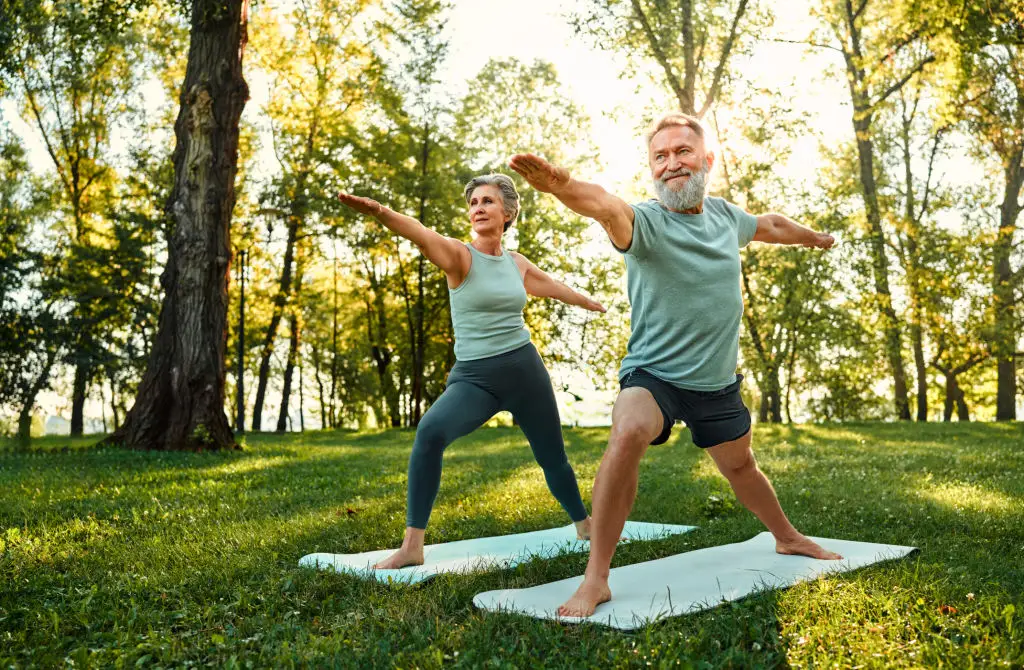
Gentle yoga isn’t just about flexibility—it’s a safe and powerful way to cultivate muscular strength, balance, and inner calm. Flows featuring warrior, chair, and plank poses challenge your legs, core, and upper body, while holding each posture enhances stability and endurance. Research supports that even gentle yoga, practiced regularly, can significantly improve strength and physical function, particularly for older adults or those with chronic discomfort. Customize each session with plenty of props—blocks, bolsters, or even folded towels—so poses fit your personal comfort zone. Time yourself for shorter or longer holds, and allow your breathing to guide the intensity. These flowing routines merge physical, mental, and emotional well-being—reminding you that “gentle” and “strong” can, and should, live side by side.
4. Towel-Slide Core and Glute Work
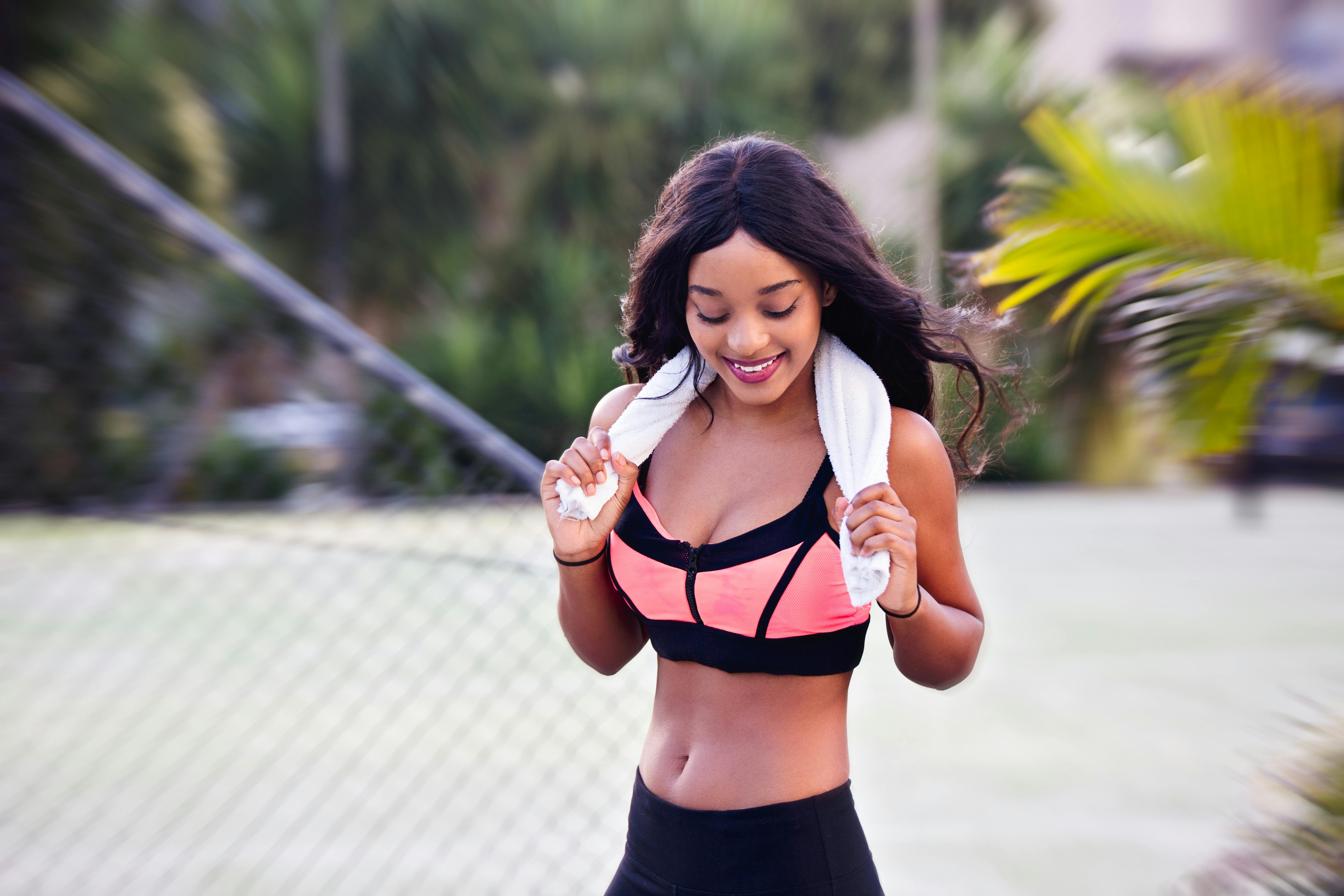
All you need is a slick floor and a hand towel (or paper plate) to create a workout that’s low-impact but high-intensity for the core and hips. This method uses controlled, constant friction to engage stabilizing muscles without jerky movements. For example, place feet on towels and perform slow, sliding reverse lunges or sliding leg curls while lying on your back. For the core, try mountain climbers where your feet glide instead of lift. This approach focuses entirely on eccentric control (the muscle lengthening phase), which is scientifically proven to build powerful, joint-protective muscle and functional stability.
15. Heavy Bag Carries and Farmer Walks

Functional strength for everyday longevity relies heavily on grip strength and core endurance—the ability to hold heavy objects without falling over. Farmer walks involve carrying heavy items (like a suitcase, two large water jugs, or heavy backpacks) in each hand and walking slowly around your home for time. This trains the shoulders, traps, core, and grip all at once with zero impact. It directly translates to real-life independence, making carrying groceries, luggage, and small children feel effortless. This is a simple, primal workout that’s pure, joint-safe functional power.
16. Mindful Rotational Band Work
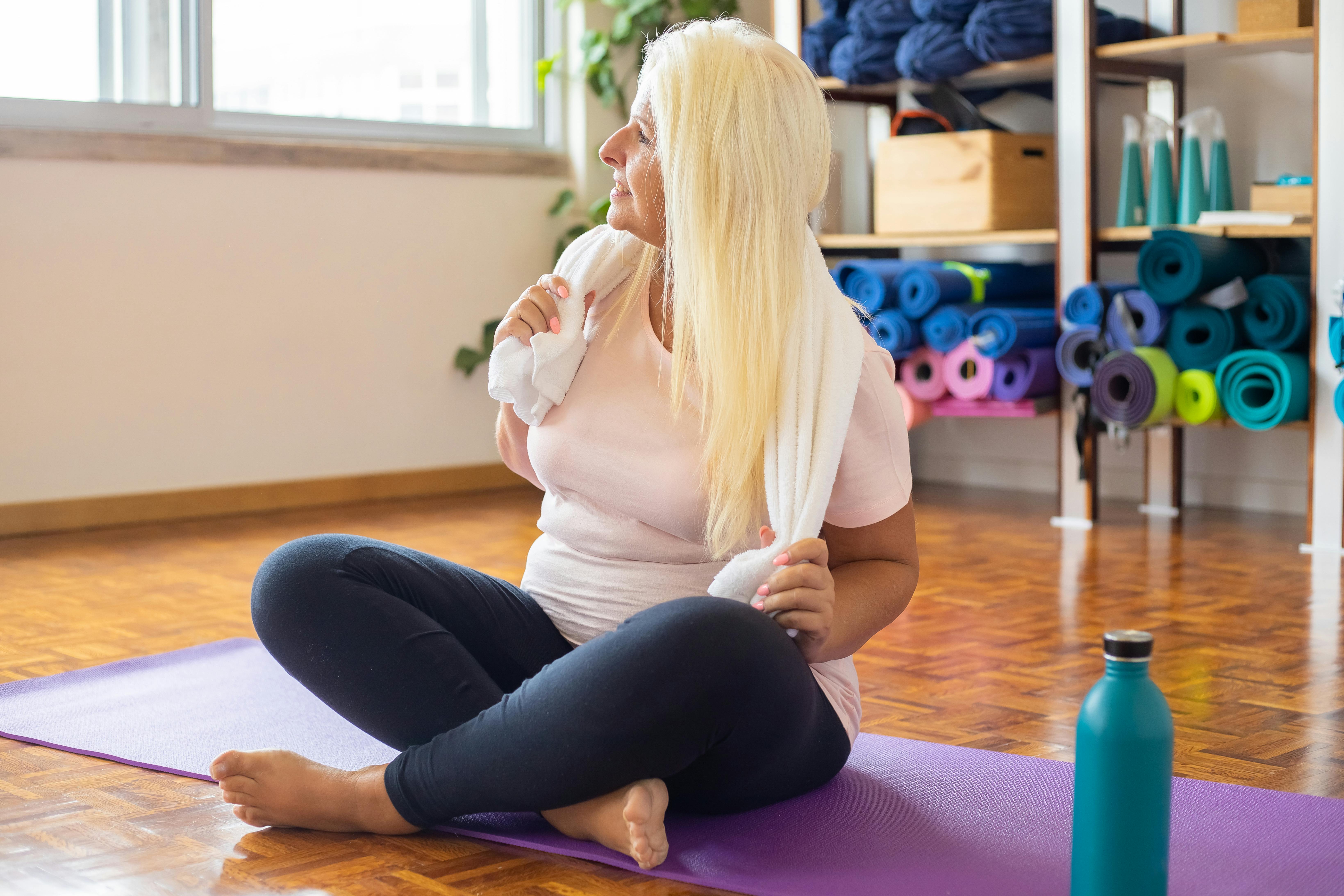
Rotational strength, the ability to twist and turn powerfully, is vital for everything from golfing to avoiding falls, yet it’s rarely trained safely. Using a resistance band anchored to a stable object (like a railing or door hinge), perform pallof presses or slow, standing wood chops. These movements engage your oblique muscles and deep core stabilizers in a controlled, low-velocity manner. This focused rotational resistance improves coordination and power without the shearing force that can injure the spine, ensuring your body stays agile and resilient against sudden twists or turns.
17. Barefoot Balance and Grip Strength Drills

This addition targets foundational stability and mobility. Performing simple strength moves—like single-leg balances, heel raises, or even slow squats—while barefoot enhances proprioception and strengthens the often-neglected intrinsic muscles of the feet. Using the small muscles of the feet and ankles to stabilize your entire frame reduces strain further up the kinetic chain (knees and hips). You can add a soft floor mat or folded towel to increase the challenge, building sturdier balance and providing a protective neurological upgrade against trips and falls.
18. Water Bottle Resistance Training (Dynamic Tension)

For absolute beginners or those recovering from injury, even light weights can be too much. Instead, use a full water bottle for dynamic tension exercises. Hold the bottle and squeeze it constantly while performing slow bicep curls, shoulder raises, or triceps extensions. The key is the intentional isometric squeeze, which recruits more muscle fibers than the light weight would normally allow, building strength safely. This technique keeps the central nervous system engaged and provides a profound mind-muscle connection without stressing weak joints or connective tissues.
19. Stability Ball Seated Core and Glute Activation
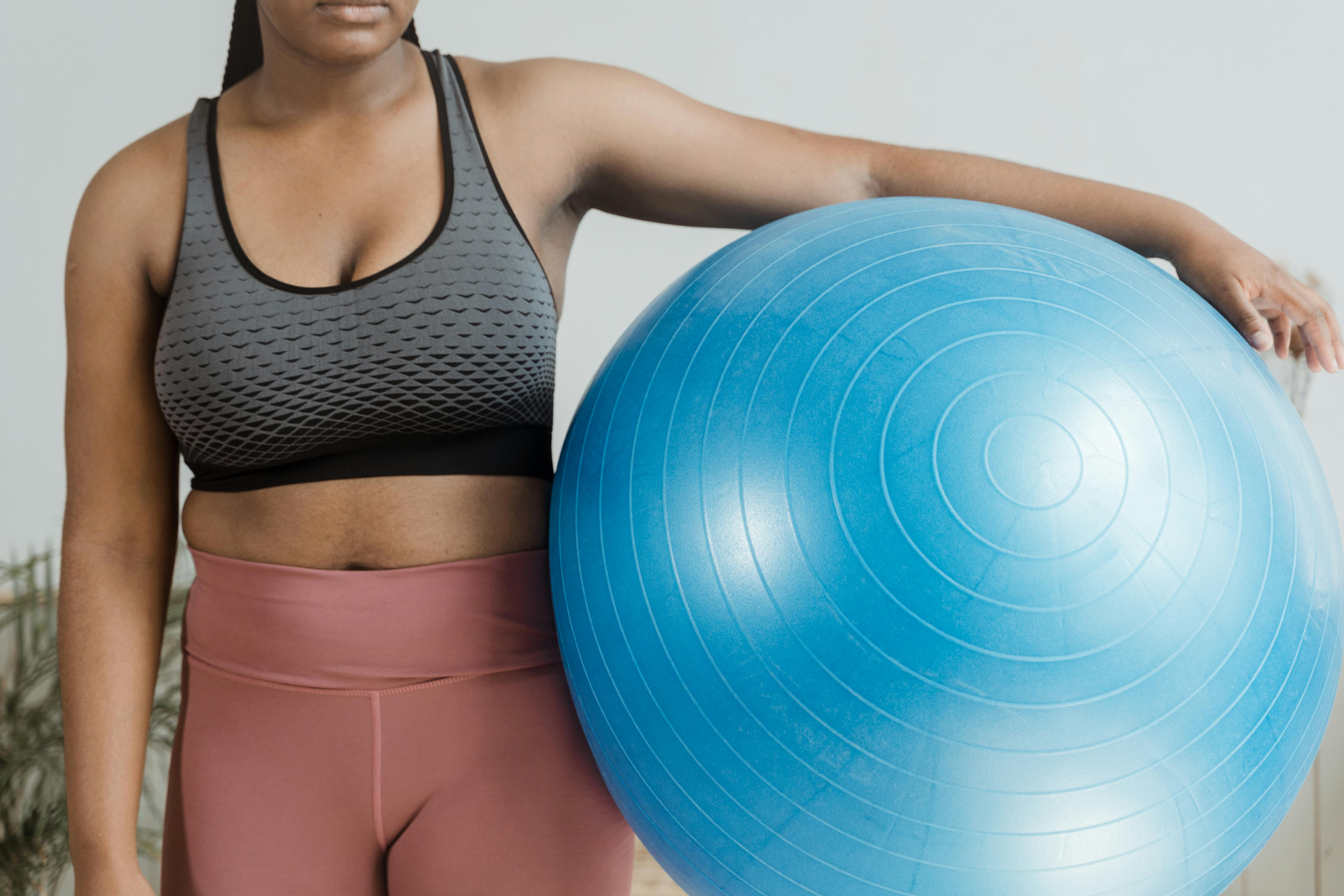
A simple stability ball (or exercise ball) is a surprisingly potent, low-impact tool for activating deep postural muscles and building core strength while seated. By sitting on the ball instead of a static chair, your body is constantly making micro-adjustments to maintain balance, which instantly engages the often-neglected deep core stabilizers, glutes, and lower back muscles—all without any jarring movement. Perform seated movements like slow marches, pelvic tilts, or gentle side bends. This constant, subtle engagement improves proprioception (body awareness) and functional strength. Incorporate this for just five minutes daily to fortify your torso and hips, providing crucial support for the spine that reduces the strain on your knees during standing activities.
20. Controlled Eccentric Tempo Training
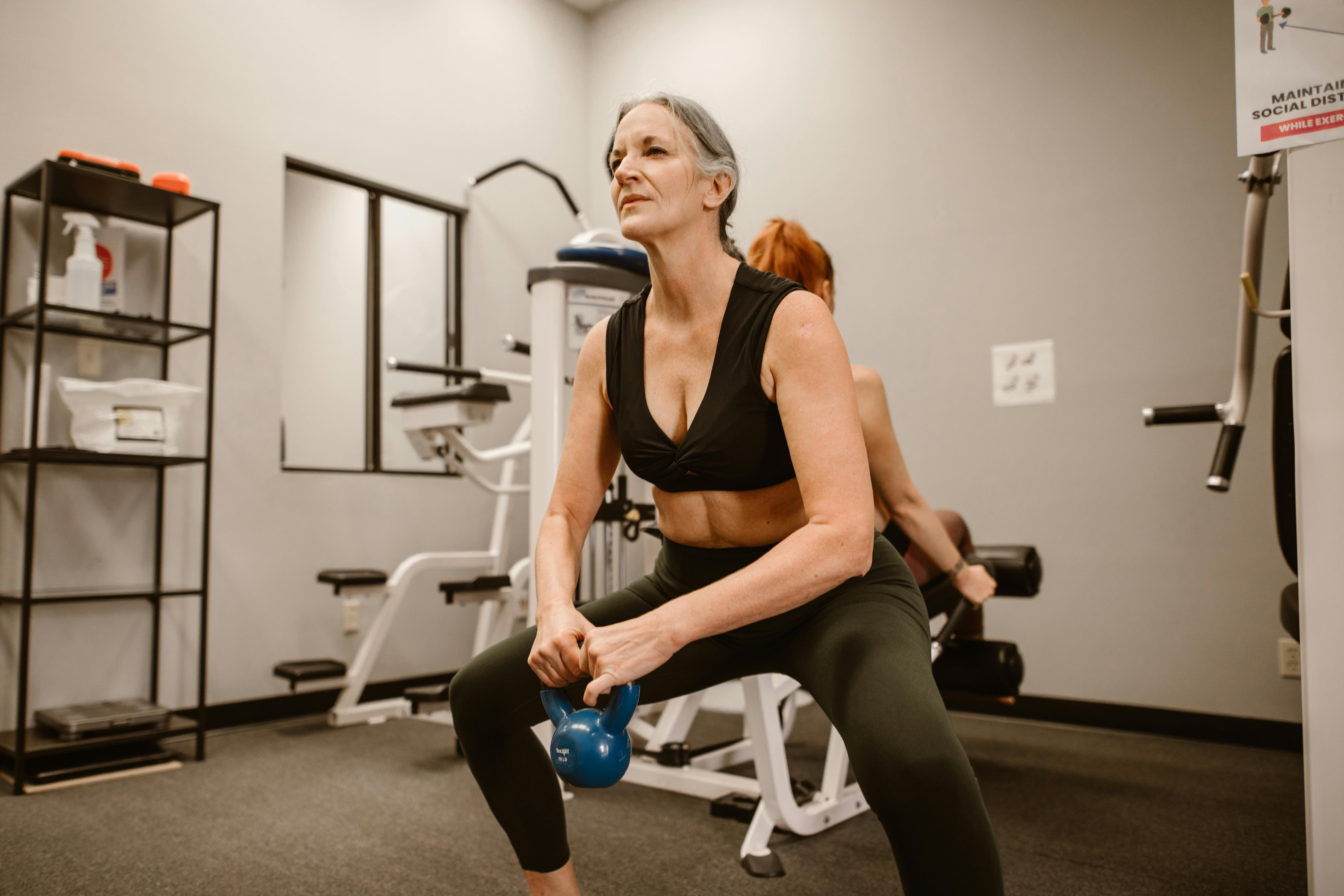
This technique involves deliberately slowing down the lengthening phase of any simple movement (the eccentric phase) to a count of four to six seconds. For instance, squatting down takes 1 second, but rising up takes 5 seconds, or slowly lowering into a push-up takes 4 seconds. Because your muscles are up to 40% stronger during the eccentric phase, controlling this slow descent maximizes time under tension and creates micro-tears necessary for hypertrophy (muscle growth) without the need for heavy weights or impact. This intense, joint-sparing method is scientifically proven to build phenomenal functional strength, improve tendon health, and rapidly increase muscle endurance, all using light resistance or body weight.
21. Micro-Adjustments on Unstable Surfaces
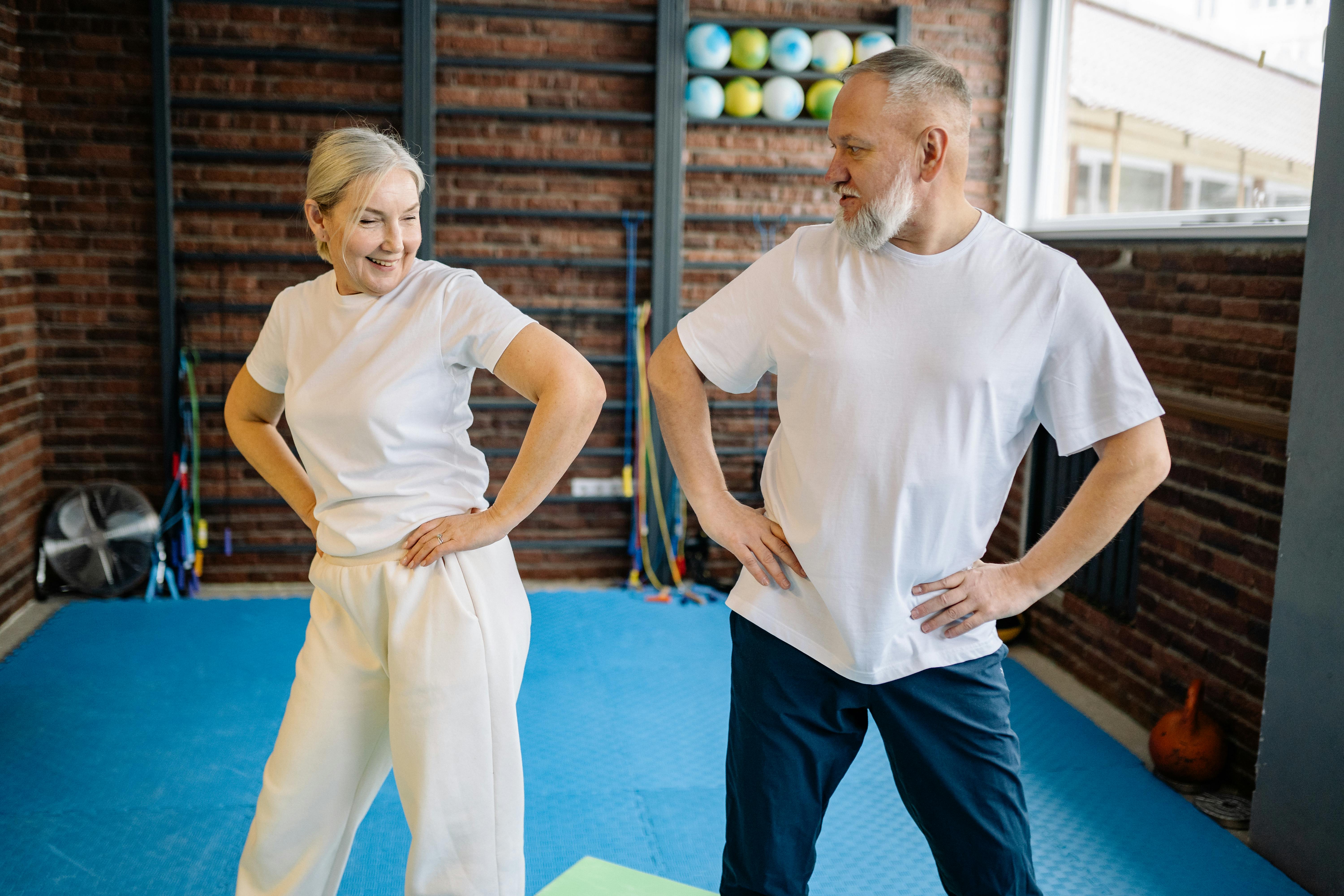
Enhance every simple standing exercise (like bicep curls or overhead presses) by performing them while standing on a subtly unstable surface—like a folded towel, a couch cushion, or a firm pillow. This immediately forces your entire system to engage deep stabilizing muscles in the feet, ankles, and core that are normally ignored. The slight wobble demands constant, low-impact micro-adjustments , dramatically improving proprioception (your body's spatial awareness) and balance control without the joint stress of high-impact moves. This simple stability upgrade translates directly to improved posture and fewer falls in real-life situations.
Celebrating Strength, Your Way

Real strength isn’t measured by gritted teeth or aching joints—it shows up when you honor where you are, and trust that growth will follow from consistency, adaptability, and self-kindness. Each of these low-impact, indoor workouts offers a path toward sturdier muscles and greater confidence, without asking you to compromise your well-being. Whether you’re experimenting with resistance bands for the first time, exploring a yoga flow, or repurposing everyday items into new tools, the journey is uniquely yours. Remember, this process is meant to feel like self-care, not a penalty. There is wisdom in moving with compassion and celebrating every positive shift—whether it’s standing tall after a wall sit or mastering a gentle squat with chair support. As you find your rhythm, you’ll discover that nurturing strength goes far beyond what the mirror reveals; it’s an investment in energy, vitality, and the confidence to move freely at any age. Here’s to trusting your body, honoring your progress, and enjoying the wellness journey you create with every mindful, empowered step.